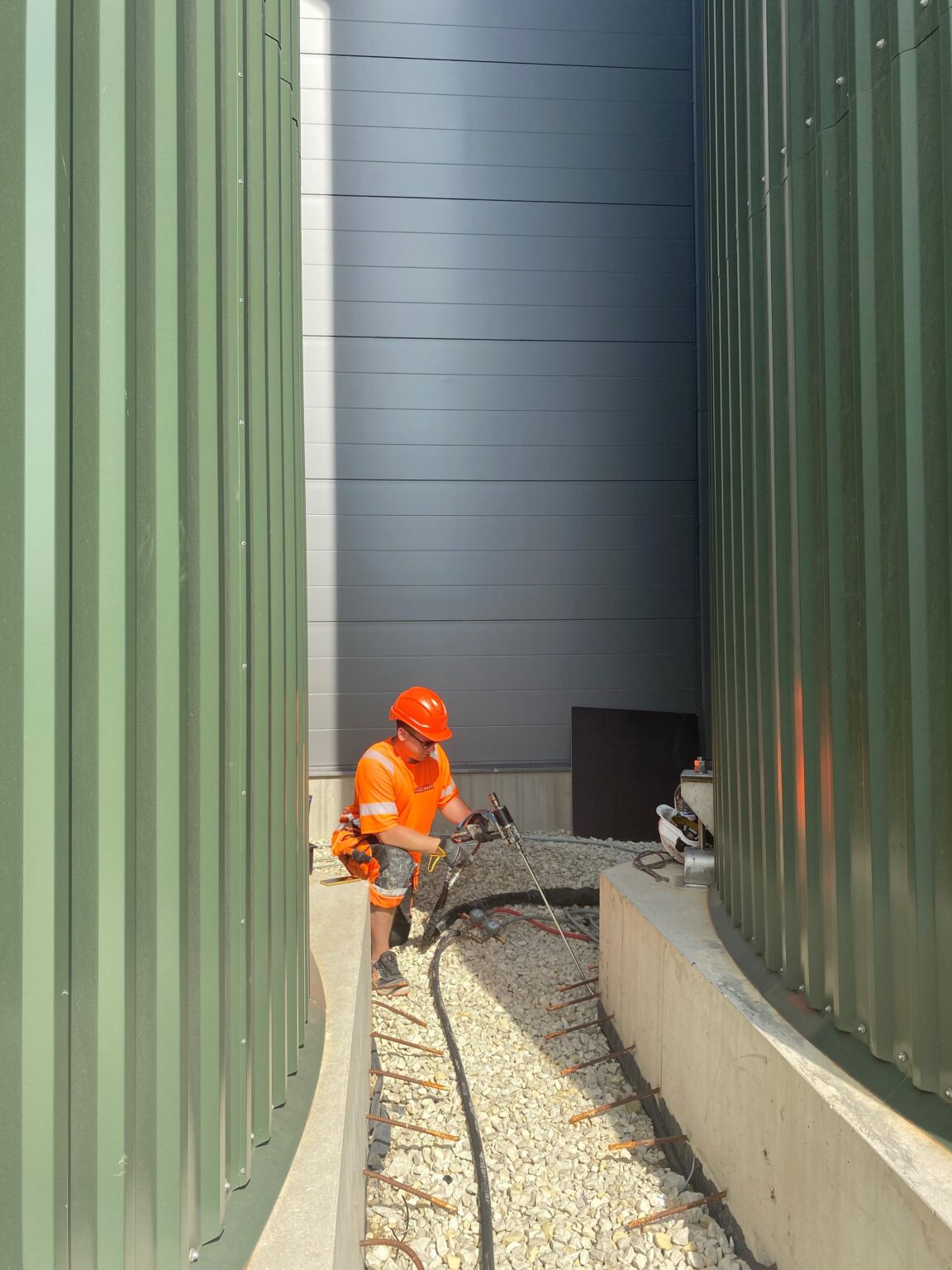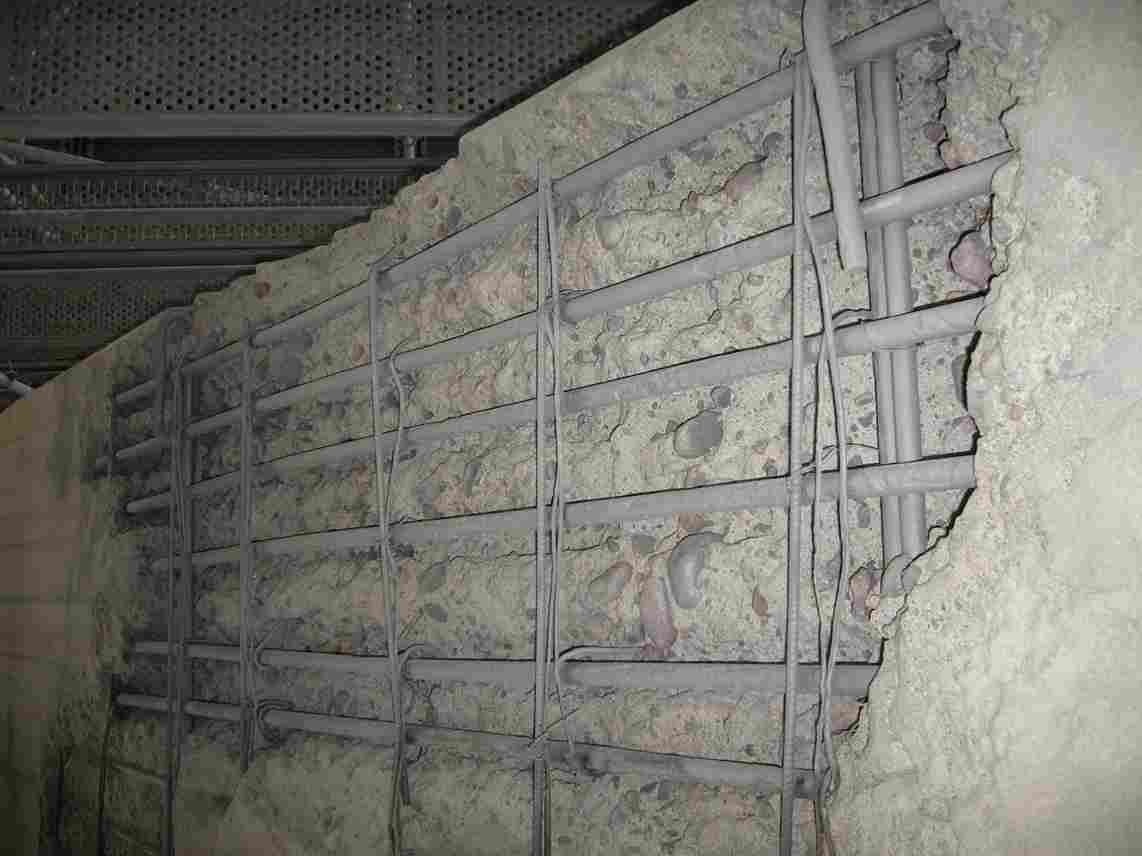Geopolymers are extensively used in repair and renovation of production and industrial facilities.
Geopolymer resins are suitable both for reinforcing the foundation of facilities that are already operational and for modernising unused facilities prior to introduction of more powerful equipment.
Many industrial and production facilities are regularly subject to overload. Depending on their specific nature, such overload may have both static and long-term dynamic impact.
Such loads result in compacted soil under the floor slabs of ground floor and various parts of the foundation. This is often accompanied by settlement of foundation and floor, causing damage to building structure. Settlement can be eliminated by using geopolymer resins injection method.
Eliminating structural damage of a building
One frequently recurring issue in the course of work is linked to using bridge cranes. When moving heavy loads, crane supports are subjected to uneven dynamic load. As a result, the soil under some supports may become more compact than under other supports, and entire structure faces uneven subsidence. If crane supports are also elements of load-bearing structure, it may lead to potential collapse of entire structure.
In order to strengthen the load-bearing frame of the building and stabilise the condition of bridge crane, it is necessary to insert geopolymer resin in the soil under sunken foundation support. This will most likely improve not only the condition of the crane, but of the structure as a whole.
Strengthening of the foundation of industrial facilities
Geopolymer resins can be injected for strengthening the soil under the foundation of industrial facilities without disrupting production cycle. Injection is performed by means of small mobile devices, inserting geopolymer material through technical holes drilled in the ground floor or surface adjacent to building (soil). Geopolymer resins injection exploits pipes with small diameter. Material expands and hardens within just a few minutes.
Increasing the capacity of undertakings
Re-commissioning of abandoned or unused industrial sites is often accompanied by the need to introduce more powerful equipment. This entails increased load on ground floor and foundation. If such loads exceed maximum limit, the soil under ground floor or foundation needs to be strengthened.
Strengthening foundation with geopolymers uses Deep Injection method, which allows inserting material deep in the soil. Additionally, when strengthening the ground floor, Slab Lifting method can be used for performing the injection. Injection can be performed both before and after installing new equipment. Geopolymer injection is continued until the load-bearing capacity of the soil under the structure corresponds to standard value.





